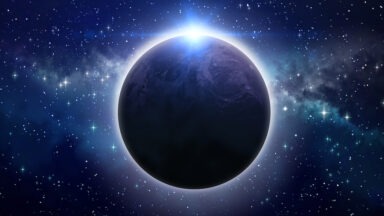Decades After Landing on Mars, We May Find Proof of Past Life

After 25 years of rovers landing on Mars, many are looking forward to the next chapter of Mars exploration, which may include excavating deep into the red planet. In July 1997, NASA’s Pathfinder landed on Mars and began its mission to demonstrate how a robotic rover would land on the red planet.
Using an innovative design, the rover landed on Mars with a parachute and a series of giant airbags to cushion its blow. The Carl Sagan memorial station and the Sojourner Rover outlived their projected lifespan, and in the years following sent magnificent images back to Earth.
The lander returned more than 16,500 images and the rover sent back 550 more, in addition to chemical analyses of rocks, soil, and data on wind and weather. The final transmission from the Mars Pathfinder was on September 27, 1997, but the data it provided helped scientists to conclude Mars was once wet and warm, and rounded rocks on the surface indicate they may have been worn down by running water, and if there was water, there could have been life.
Flash forward to today, NASA’s Perseverance Rover, on the red planet since February of 2021, is tasked with finding past or present life and seeing if humans could one day explore or colonize Mars.
Perseverance is collecting samples to determine if they contain any fossils of ancient Martians. But a new study led by Alexander Pavlov, a space scientist at NASA, says they might have to dig a lot deeper.
Pavlov argues that amino acids could be the best evidence of any past life on Mars, but after millions of years of radiation, all those amino acids on the surface would have been destroyed, writing, “Our experimental results suggest serious challenges for the search of ancient amino acids and other potential organic biosignatures in the top 2m of the Martian surface.” Two meters, or roughly seven feet, may not sound like much, but Perseverance can only dig a few inches.
“Microcraters are common on Mars,” Pavlov told Vice. “Small impactors can excavate rocks from several meters of depth. Cosmic rays are significantly reduced by two-meter depth into a rock and do not penetrate at all below four meters. Therefore, an ejecta from such depths would have a small exposure time to cosmic rays and thus, may contain the primordial unaltered amino acids from billions of years ago.”
In 25 years of humans studying the surface of Mars we have learned so much, but as Pavlov concluded in his study, “We have only scratched the surface of this problem.”
With every problem comes the opportunity to figure out a solution and perhaps this will help us find life on Mars.
Is This a Solution to the Fermi Paradox?

A new theory has been devised on why aliens have never visited Earth, that we know of, as a possible resolution to the Fermi paradox.
Many who are curious about the existence of ETs have heard about the “Fermi paradox,” named after famous astrophysicist Enrico Fermi.
The story goes that in a lunchtime conversation with other astrophysicists who reasoned that, given the vast size and age of the universe it stands to reason, there must be other intelligent life out there, to which Fermi asked, “where is everybody?”
For decades people have tried to answer that question if there are so many possible ET civilizations, where are they? Now, astrobiologists Michael Wong, of the Carnegie Institution for Science, and Stuart Bartlett, of the California Institute of Technology offer their hypothesis, and it’s a bit dark.
Using studies of the growth of cities on Earth, they argue that civilizations grow infinitely but in a finite time. This infinite growth of population and overuse of energy will eventually lead to the death of the civilization or possibly saving themselves.
“We propose a new resolution to the Fermi paradox: civilizations either collapse from burnout or redirect themselves to prioritizing homeostasis, a state where cosmic expansion is no longer a goal, making them difficult to detect remotely.”


































